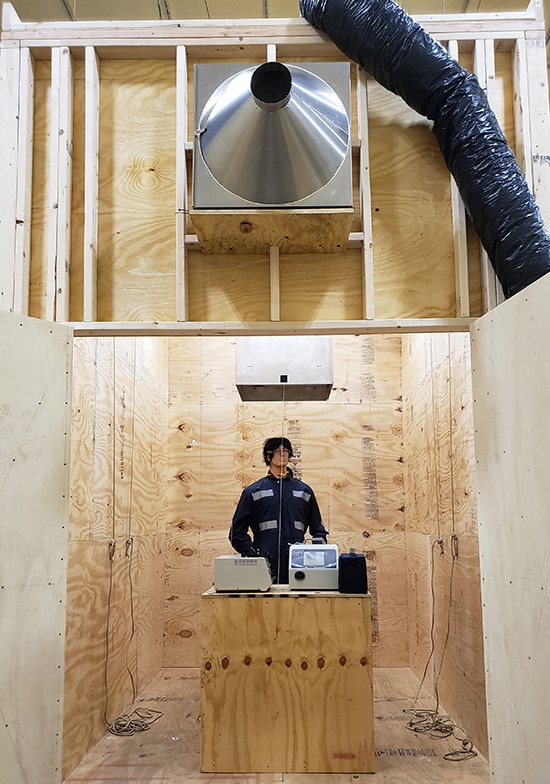Mining Feature: Mining Researchers Use Expertise to Stop the Spread of COVID-19
Wednesday, May 26, 2021

A mobile app for contact tracing. Photo by Shutterstock.
The NIOSH Mining Program is working to stop the spread of COVID-19 with two research projects, one using mobile tools for contact tracing, and the other examining targeted ventilation.
The first project, Evaluation of Mobile Applications for Digital Contact Tracing, focuses on developing guidelines for the design, implementation, and evaluation of digital contact tracing tools to protect essential grocery, retail, and food manufacturing workers. Each of these work environments put essential workers at risk of being exposed to COVID-19.
Contact tracing identifies people who have come in contact with someone who has COVID-19, and notifies them to take steps to quarantine, get tested, and isolate if they become sick themselves. Effective contact tracing is crucial in the response to a pandemic. However, grocery stores and food manufacturing plants may find it difficult to use traditional contact tracing in their work environments. While new contact tracing technologies have emerged, the effectiveness and acceptance of these new methods remain in question.
The NIOSH research team is addressing these questions by conducting lab studies to evaluate the functionality and effectiveness of digital contact tracing technologies. The team is also exploring food system workers’ acceptance of these technologies through interviews and focus groups. The project will lead to guidance on how to effectively introduce and use digital contact tracing technologies in workplaces.

A laboratory set-up measuring point-of-use ventilation. Photo by NIOSH.
A second project, Point-of-Use Ventilation Systems to Prevent Exposure to Airborne Viruses, is exploring ventilation strategies to reduce exposure to virus-contaminated particles and to help stop the spread of the virus that causes COVID-19. Researchers are using experiments involving particles of different sizes along with computer modeling to investigate how to use controlled airflow to help protect workers from COVID-19. Essential workers, such as long-term care facility workers, meat and poultry processing workers, and store cashiers may face a risk of being exposed to COVID-19 by contaminated droplets in the air.
Researchers are testing the effectiveness of three types of point-of-use ventilation systems—push, pull, and push/pull systems—for protecting workers against virus-contaminated particles. The point-of-use approach provides additional, targeted ventilation at the worker’s location instead of solely relying on the building’s heating, ventilation, and air conditioning (HVAC) system.
One example is installing a ventilation supply hood above a store clerk at a checkout counter. The ventilation hood would blow clean, uncontaminated air from above and over the worker. Ultimately, this research will help to inform guidance on how to use point-of-use ventilation systems to best protect workers from potential COVID-19 exposures.